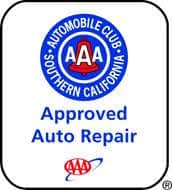How often should I get my car checked? What are the symptoms of a bad oil change? How do I know if my brakes are working properly? These questions are important because they affect our safety and well-being.
Automobile diagnostics play a vital role in maintaining vehicle health. They provide information about the condition of various components within the vehicle such as the engine, transmission, suspension, steering system, exhaust system, air conditioning system, battery, electrical system, etc. This helps us identify problems before they become serious and costly.
Diagnostic testing is essential to ensure safe driving conditions. The sooner you detect a problem, the better chance you have at fixing it before it becomes critical.
The following article will help you understand how automotive diagnostic tests work and what you can expect when your vehicle comes for an inspection.
What Are Diagnostic Tests?
When we drive our vehicles, we rely on them to keep us safe from harm. We depend on their ability to stop, steer, brake, etc. In order to make sure that these systems function correctly, we need to perform regular maintenance checks.
These routine inspections include checking fluids levels, inspecting belts, hoses, and other parts for wear or damage. It’s also important to check the tires, lights, wipers, etc., to make sure everything is operating safely.
In addition to performing maintenance checks, we also want to be able to tell whether there are any issues with the vehicle’s performance. For example, if we notice that the gas mileage has dropped, we may suspect that something is wrong with the fuel injection system. If we find this out early enough, we can take steps to fix the issue before it causes more expensive repairs down the road.
Diagnostic tests are used to determine the overall health of the vehicle. They look at all aspects of the vehicle including:
• Engine
• Transmission
• Brakes
• Suspension
• Steering
• Electrical System
• Air Conditioning
• Fuel System
• Exhaust System
• Battery
• Tires
• Lights
Diagnostic tests allow us to inspect each component individually and see if anything needs attention. Each test provides valuable information about the condition of the vehicle.
For example, if we were to run a compression test on the engine, we would measure its pressure while running. A high-pressure reading indicates that the piston rings are worn and the cylinder walls are damaged.
If we were to check the fluid level in the cooling system, we would use a dipstick to measure the amount of coolant present. This tells us if the radiator cap is leaking or if there is a leak somewhere else in the system.
If we were to check the tread depth on the tire, we could tell if the tires are wearing unevenly. This may indicate that one side of the tire is getting lower than the other.
Diagnostic Testing Process
Before we begin a diagnostic test, we must first prepare the vehicle. This includes removing items like keys, cell phones, wallets, etc. so that we don’t accidentally start the car during the test.
We then turn off the ignition and remove the key fob from the ignition switch. Next, we disconnect the battery cable. Finally, we turn off all accessories (lights, radio, etc.) and close all windows.
Once the vehicle is prepared, we connect the diagnostic equipment to the vehicle. This usually involves connecting a computer to the OBDII port located under the dashboard. We then plug the cables into the vehicle’s diagnostic harness, which connects the diagnostic equipment to the OBDII connector.
Next, we set up the computer software. This allows us to view the results of the test. The software will display the results of the test along with an explanation of what we should do next.
The most common types of diagnostic tests are listed below. However, not every test is available for every vehicle model.
Engine Tests
The following tests are performed by the engine control module (ECM). These tests are designed to monitor the health of the engine.
• Compression Test – Measures the pressure inside the cylinders when the pistons move back and forth. High-pressure readings indicate that the piston rings are too thin and the cylinder walls are too weak.
• Idle Speed Test – Measures how fast the engine runs when no load is applied. Too much idle speed means that the ECM thinks the engine is working harder than necessary.
• Throttle Position Sensor Test – Checks the position sensor attached to the throttle body. This measures the position of the accelerator pedal and sends this data to the ECM. If the position sensor fails, the ECM won’t know whether the driver is pressing down hard or lightly.
Transmission Tests
The following tests monitor the health of the transmission.
• Transmission Fluid Level Test – Determines the amount of fluid in the automatic transmission. Low levels can cause the transmission to slip and stall out.
• Shift Light Test – Checks the shift light to see if it is functioning properly. A malfunctioning shift light can be caused by a faulty solenoid valve.
Suspension Tests
The following tests examine the health of the vehicle’s suspension system.
• Tire Pressure Monitor Test – Monitors the pressure of each tire. High pressures can lead to blowouts.
• Suspension Defect Test – Performs a series of tests to determine if there is any damage to the vehicle’s shock absorbers, springs, struts, bushings, ball joints, or other parts of the suspension.
Steering System Tests
The following tests check the health of the steering system.
• Steering Angle Sensor Test – Measures the angle of the steering wheel. When the sensors fail, the vehicle may experience excessive turning.
• Steering Pump Test – Measures the flow rate of the power steering pump. If the pump isn’t running efficiently, the power steering system could lose its effectiveness.
Exhaust System Tests
The following checks the health of the vehicle’s exhaust system.
• Exhaust Gas Temperature Test – Measures the temperature of the exhaust gases. High temperatures can cause premature failure of catalytic converters.
• Catalytic Converter Test – Measures the oxygen content of the exhaust gas. If the converter is clogged, the car won’t get enough oxygen from the air/fuel mixture.
Battery Tests
The following tests measure the health of the vehicle battery.
• Battery Voltage Test – Measures the voltage of the battery. Low voltages can mean the battery has lost capacity.
• Battery Condition Test – Measures the current draw of the battery. High currents can indicate an internal short circuit.
Air Conditioner Tests
The following tests assess the health of the vehicle air-conditioning system.
• Air Filter Cleanliness Test – Measures the dirtiness of the air filter. Dirty filters will restrict airflow and reduce the cooling efficiency.
• Coolant Temp Test – Measures the coolant temperature. Low temperatures can result in overheating.
Electrical System Tests
The following test checks the health of the electrical system.
• Alternator Output Test – Measures the output of the alternator. If the alternator isn’t producing sufficient electricity, the vehicle will not start.
• Starter Motor Test – Checks the starter motor for proper operation. If the starter doesn’t turn over when the ignition switch is turned on, the engine will not start.
• Ignition Coil Test – Measures the resistance of the ignition coil. If the coil is defective, the spark plugs will not fire.
• Spark Plug Test – Checks the performance of the spark plug wires. If the plugs are dirty, worn, or improperly installed, the spark plugs won’t ignite the fuel mixture.
If your vehicle is having any of these symptoms, contact our service department at Davies Auto Care immediately! We’ll perform a free diagnostic check that will let you know what needs to be done.





